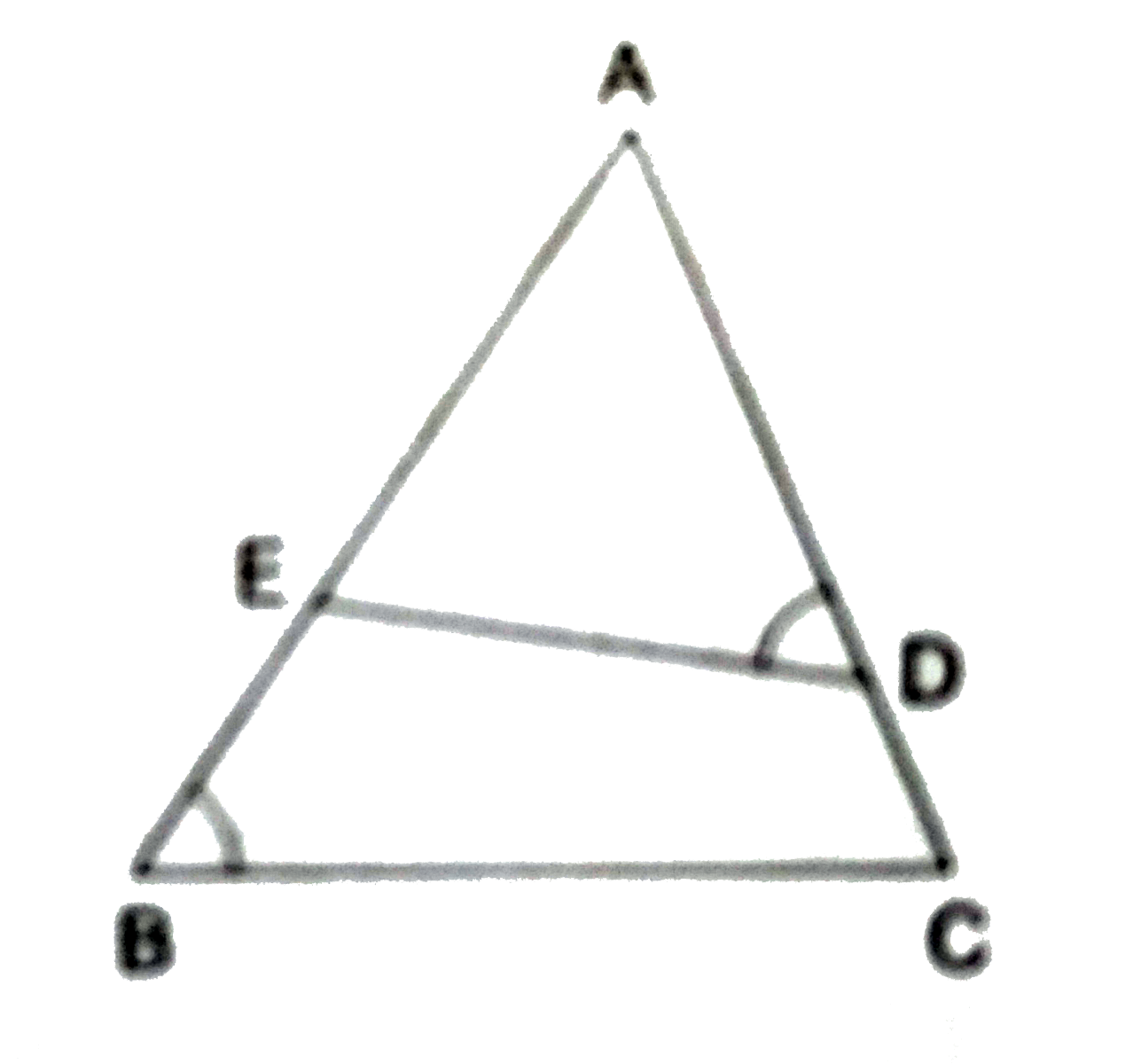In ΔABC,DE||BC. If AD= 4 cm, DB = 4.5cm and AE = 8cm, find AC.
The correct Answer is:17 cm
To solve the problem, we will use the properties of similar triangles. Since DE is parallel to BC, we can use the concept of proportionality in triangles.
1. Identify the Given Information:
- AD = 4 cm
- DB = 4.5 cm
- AE = 8 cm
- EC = ? (unknown)
- AC = AE + EC (we need to find this)
2. Set Up the Proportionality:
Since DE is parallel to BC, we can use the property that states:
ADDB=AEEC
3. Substitute the Known Values:
Substitute the known lengths into the proportion:
44.5=8EC
4. Cross-Multiply to Solve for EC:
Cross-multiplying gives us:
4⋅EC=8⋅4.5
4⋅EC=36
5. Divide to Find EC:
Now, divide both sides by 4:
EC=364=9 cm
6. Calculate AC:
Now that we have EC, we can find AC:
AC=AE+EC=8 cm+9 cm=17 cm
Final Answer:
The length of AC is 17 cm.
- AD = 4 cm
- DB = 4.5 cm
- AE = 8 cm
- EC = ? (unknown)
- AC = AE + EC (we need to find this)
Since DE is parallel to BC, we can use the property that states:
ADDB=AEEC
Substitute the known lengths into the proportion:
44.5=8EC
Cross-multiplying gives us:
4⋅EC=8⋅4.5
4⋅EC=36
Now, divide both sides by 4:
EC=364=9 cm
Now that we have EC, we can find AC:
AC=AE+EC=8 cm+9 cm=17 cm
The length of AC is 17 cm.
Topper's Solved these Questions
- TRIANGLESBOOK - VK GLOBAL PUBLICATIONCHAPTER - TRIANGLESEXERCISE - PROFICIENCY EXERCISE (LONG ANSWER QUESTIONS)
15 Videos
- TRIANGLESBOOK - VK GLOBAL PUBLICATIONCHAPTER - TRIANGLESEXERCISE - SELF ASSESSMENT TEST
10 Videos
- TRIANGLESBOOK - VK GLOBAL PUBLICATIONCHAPTER - TRIANGLESEXERCISE - PROFICIENCY EXERCISE (VERY SHORT ANSWER QUESTIONS)
14 Videos
- REAL NUMBERSBOOK - VK GLOBAL PUBLICATIONCHAPTER - REAL NUMBERSEXERCISE - Self -Assessment Test
11 Videos
- VALUE-BASED QUESTIONSBOOK - VK GLOBAL PUBLICATIONCHAPTER - VALUE-BASED QUESTIONSEXERCISE - Unit-VII : (Statistics & Probability)
8 Videos
Similar Questions
Knowledge Check
In ΔABC,AB=8 cm, BC=15 cm and AC=17 cm. find the largest angle.
A∠AB∠CC∠BDNone of theseIn a triangle ABC, angle bisector of ∠BAC cut the side BC at D and meet the circumcircle of ΔABC at E. If AC = 4 cm, AD = 5 cm, DE = 3 cm. Find the length of AB.
A10 cmB9.6 cmC12 cmD9 cm
In the given figure, if ∠ADE=∠B, show that ΔADE~ΔABC. If AD=3.8cm,AE=3.6cm,BE=2.1cm,andBC=4.2cm, find DE.

View SolutionIn ΔABC,DE∣∣BC so that AD==2.4cm,AE=3.2cmandEC=4.8cm, then , AB= ?

View SolutionIn the figure given below DEBC . If AD=2.4cm , DB=3.6cm and AC=5cm . Find AE .
View SolutionIn a ΔABC, AB = 3 cm, BC = 6 cm. and CA = 4 cm. AD is median then AD?
View SolutionIn ΔABC, AB = 15 cm, BC = 12 cm and AC = 17 cm . Find out the greatest and smallest angle of ΔABC .
View SolutionD and E are points on the sides AB and AC respectively of a △ABC such that DE||BC
(i) If AD=3.6cm,AB=10cm and AE=4.5cm, find EC and AC .
(ii) If AB=13.3cm,AC=11.9cm and EC=5.1cm," find AD
(iii) If ADDB=47 and AC=6.6cm find AE
(iv) If ADAB=815 and EC=3.5cm find AE
View Solution

